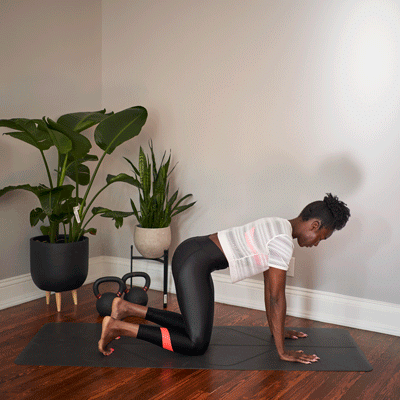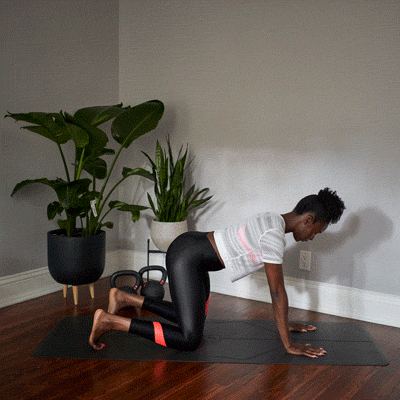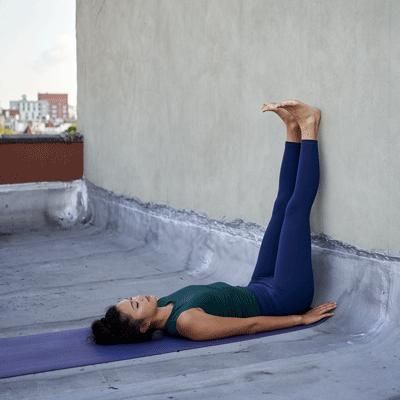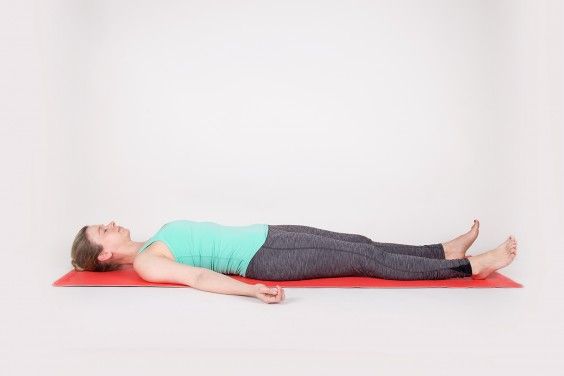Stress is stressful, ain’t it? Considering that 84 percent of U.S. adults in a 2021 survey reported experiencing emotional effects from prolonged stress, anything that can help is worth our attention.
And do you know what’s great for a bit of stress-busting? Yoga!
Can you really use yoga to reduce stress?
While we’re still waiting on the definitive “yes” from science, we can feel pretty confident about the answer based on what we already know about the effects of yoga.
Research already suggests that yoga:
- can relax you, both physically and mentally
- can relieve pain and muscle tension related to stress
- encourages the release of endorphins in your body
- helps you practice mindfulness and concentration
- can cultivate positive emotions
- involves a lot of breathing exercises — and focused breathing is a known stress-buster
Read on to learn more about some of the poses that get the calming job done and the science behind yoga’s effectiveness.
Here are some yoga poses you can use to get started if you want to use yoga for stress management (complete with step-by-step instructions, ’cuz we’re nice).
1. Cat-Cow Pose (Marjaryasana-Bitilasana)
Cat-Cow is a simple pose that’s great for linking the breath to movement. Remember to allow your breath to guide your body.
- Start in tabletop pose: on all fours with wrists under shoulders and knees under hips.
- On the inhale, turn your tail skyward, roll shoulders back, and let belly sink toward the mat. (This is Cow Pose.)
- On the exhale, tuck chin into chest and arch your spine to the ceiling, like a cat (this, obvi, is Cat Pose).
- Alternate between Cow and Cat for 1 minute (or until you get bored — we can’t tell you what to do).
2. Child’s Pose (Balasana)
In yogic teachings, Child’s Pose is said to create inward focus and restore energy. It’s also a great stress-relieving pose that even beginners can try right away.
- Kneel on the mat, with knees together or slightly apart.
- Sit on your heels.
- Fold forward at your hips, resting forehead on the mat.
- You can either extend your arms forward or keep them alongside your legs.
- Let torso sink into thighs.
- Breathe, focus, relax.
- Hold the pose for as long as you want (or try about 5 mins).
3. Legs-up-the-Wall Pose (Viparita Karani)
Not only is Legs-up-the-Wall Pose great for stress and relaxation, it’s also a circulation booster.
- Sit on the floor facing a wall, as close to it as you can be.
- Lie on your back and place your legs up on the wall, with knees straight.
- Keep your hips as close to the wall as you can (ideally they’ll be touching it).
- Rest arms alongside your body or (if you’re feeling spicy) place one hand on your belly and one on your chest.
- Hold for up to 15 mins.
4. Corpse Pose (Savasana)
This stress-busting yoga posture isn’t just super easy, it’s also got a spooky word in the name. Perfect for Halloween-themed yoga classes (which may or may not be a thing we made up).
- Lie flat on your back, with feet a little wider than your hips.
- Rest your arms next to your body at a 45-degree angle.
- Keep your head, neck, and shoulders aligned with your spine.
- Breathe and relax.
- Hold for 10–20 minutes, or as long as you want.
Here are some pro tips you can use to better flex yourself out of a stress rut.
Release that negativity
Notice that we’re not saying to “ignore” negative feelings. We’re saying release them — as in, let them flow out of you. Practice awareness, acceptance, and detachment during your yoga sessions to replace those negative thought patterns with positive ones.
Be present
It may be tough to imagine a moment in the day when at least 20 different things from your to-do list aren’t bouncing around in your head. Learning to focus on the present moment is a big help.
It’s also easier said than done, of course. That’s why all those mindfulness and awareness meditations you’ll be doing as part of your yoga practice are there. The more you do them, the easier they’ll become. Keep at it!
Make stress-busting changes *off* the mat too
Making positive changes off the mat will help support the stress relief you experience on it. Do whatever you can to reduce the stress in your life. Yoga won’t make you immune to stress, but it can help you cope better with what life throws at you.
Work with an instructor
It’s possible to teach yourself yoga, but doing that might cause extra stress (not to mention the risk of physical injury). if it’s an option for you, working with a professional yoga instructor will help you minimize your on-mat stress and maximize your off-mat chill.
Yoga breathing exercises for stress relief
Pranayamas (that’s “breathing exercises,” for those who aren’t fluent in Sanskrit) help you harness your breath as a body/mind calming powerhouse. They’re a key part of yoga.
There are loads of pranayamas. Like, we’re talking more than there are Pokémon. Here are some popular ones noted for their stress-slaying potential:
- Nadi Shodhana (Alternate-Nostril Breathing)
- Ujjayi (Snoring Breathing)
- Kapalabhati (Breath of Fire)
- Simha (Lion’s Breath)
- Sitali (Cooling Breath)
- Bhramari (Humming Bee Breath)
Each of these is an individual technique that requires practice. If you have a yoga instructor, they’ll be happy to talk you through them. And of course there are many guides available online.
Research on yoga and stress is a double-edged sword. On one hand, there’s a good deal of it out there. On the other, it’s not the most reliable, mainly because stress is subjective. That makes it hard to measure.
Short of wiring somebody’s brain to a computer while they yoga themselves sillycalm, science can’t fully quantify yoga’s stress-level impact. However, the science we do have suggests that chill yoga peeps probably aren’t wrong about yoga and stress.
A good place to start is with the impact yoga has on folks working in high stress environments. Lucky for you, a bunch of yoga-science enthusiasts in 2017 did a review of research on stress levels of healthcare workers who practice yoga.
They found that yoga appeared to be effective in managing/reducing stress on the healthcare front lines. However, they also pointed out that more “methodologically relevant studies” are needed before we can say the benefits are definitely due to yoga.
Work isn’t the only stress-maker. Illness can generate massive stress, whether mental or physical. Another 2017 review found that yoga-based intervention could be effective in reducing a variety of mental health concerns, including stress, in women with breast cancer.
But this review also describes the evidence as being of only “moderate quality.” Looking at some individual studies should give you an idea of what “moderate quality” means.
A small 2018 study found that yoga was effective at reducing stress, anxiety, and depression. But the study included only 52 women. Plus, there was no control group.
There’s a good chance yoga could have played a role in the stress reduction, but with no non-yoga group to compare, it’s tough to say. Similar research on men* in 2020 had the same issues — only 10 participants and no control group.
In short: A lot of research suggests that yoga has a positive impact on stress, but not much of it is conclusive. Still, any pinch of salt you do take with it is probably the tiniest pinch of salt literally ever.
*Please accept our apologies for the lack of trans- and non-binary-inclusive research. We looked, but it sadly ain’t out there yet.
Since science is still being coy about definitively saying yoga beats stress, getting to the how is a challenge and a half. We love challenges, though, so we got you.
Physical relaxation
Yoga helps you feel physically relaxed. A 2021 study on the use of physical relaxation to treat occupational stress suggested that employers should “consider implementing these methods into workplace wellness programs.”
Yoga was one of the methods used, and the researchers singled it out as notably effective.
Mental relaxation
A 2018 study on yoga nidra and seated meditation found that a yoga-practicing “relaxation group” reported less anxiety and stress than the non-yoga-doing control group. But the sample size was small (only 60 people). (Yoga nidra is a type of deep relaxation yoga and guided meditation.)
While there’s little research on the relationship between broader yoga and relaxation, the yogis in your life can likely confirm that it’s great for mentally kicking back, regardless of the specific practice.
Reduced muscle tension
Another 2018 study found promising evidence that muscle relaxation therapies could help manage stress (along with anxiety and depression). Muscle tension is a stress symptom and can also be a cause of stress. While yoga is known to reduce muscle tension, the researchers used a number of different techniques.
Fortunately, yoga-specific research also exists. A small 2020 study found that yoga significantly improved muscle tension in children with chronic pain.
Hopefully, science will soon cement the links between yoga, reduced muscle tension, and stress.
Endorphin boost
In a 2021 case report, scientists explored the effectiveness of yoga as a treatment for opioid dependence syndrome (ODS) in one man. After 9 months of regular yoga, the levels of beta-endorphins in his bloodstream rose from 2.02 pmol/L to 6.51 pmol/L.
It’s small increase, but significant when you consider that ODS is symptomatically defined by low endorphin levels.
Sadly, we’re still waiting on the follow-up study that expands this investigation beyond literally just one guy.
Beta-endorphins play a crucial role in how your body regulates stress (among other things). If solid research emerges to connect yoga to increased bloodstream beta-endorphin levels, it could explain a lot about the mechanics of mat-bending relaxation.
Mindfulness/concentration
Mindfulness, awareness, and concentration are just as important as any physical work you’re doing to relieve stress. A 2017 study of schoolchildren in India found that yoga therapy both reduced their stress levels and increased their concentration. But the study included only six participants.
A 2019 study looked at the differences between mindfulness yoga, non-mindful stretching, and resistance training exercises for managing stress in 138 people with Parkinson’s disease. This study found that mindfulness yoga worked better than purely physical stretches.
According to the results, “mindfulness yoga appeared to be an effective and safe treatment option for patients with mild-to-moderate Parkinson disease for stress and symptom management.”
Not to be a broken record, but more research is needed, obviously. But, based on this sweet 2018 review that concluded that Mindfulness-Based Stress Reduction (MBSR) reduces workplace stress, we can be pretty confident that mindfulness is part of what gives yoga its stress-reducing magic.
Emotional regulation
This one’s harder to quantify scientifically, but there’s evidence that yoga could reinforce emotional self-control, which is essential for effective stress management.
In a 2020 study, 110 participants ages 13 to 18 were split into two groups: yoga-doers and non-yoga-doers. Researchers found the yoga group to “significantly differ from the non-yoga group on emotional regulation, self-esteem, and feeling components”. (“Feeling components” here basically means “coping mechanisms.”)
If these results can be replicated across a substantial sample size, it could provide concrete evidence for yoga’s ability to teach self-regulation of emotions.
Deep/mindful breathing
A 2021 study looked at the impact of regular 5-minute mindful breathing sessions on stress levels in cancer patients. After 3 months, those who practiced mindful breathing had a “significant” reduction in stress.
If a future study focuses on yogic deep/mindful breathing specifically, we’ll know for certain how much the breathing in yoga contributes to yogic chill.
Yoga is an effective tool to help you manage stress, mainly due to its ability to reduce muscle tension and promote the release of endorphins while encouraging mindfulness and better emotional self-regulation.
The science isn’t yet conclusive — we need more large, high quality studies to back up what the current ones indicate. But there’s plenty of anecdotal evidence available to feel good about.
General yoga poses might help reduce stress levels over time, but the breathing and meditation aspects of yoga are where you’re really gonna win when it comes to stress relief.





